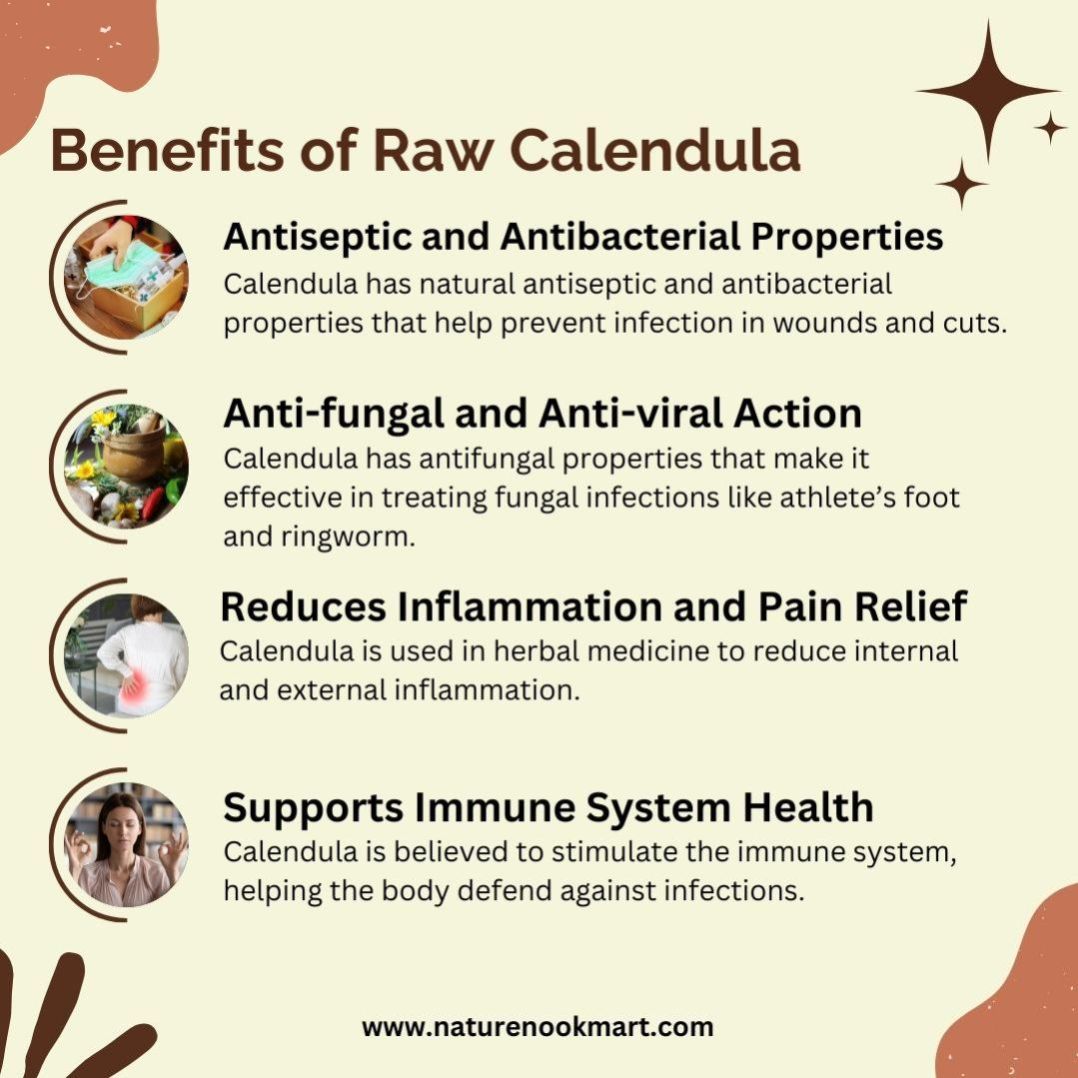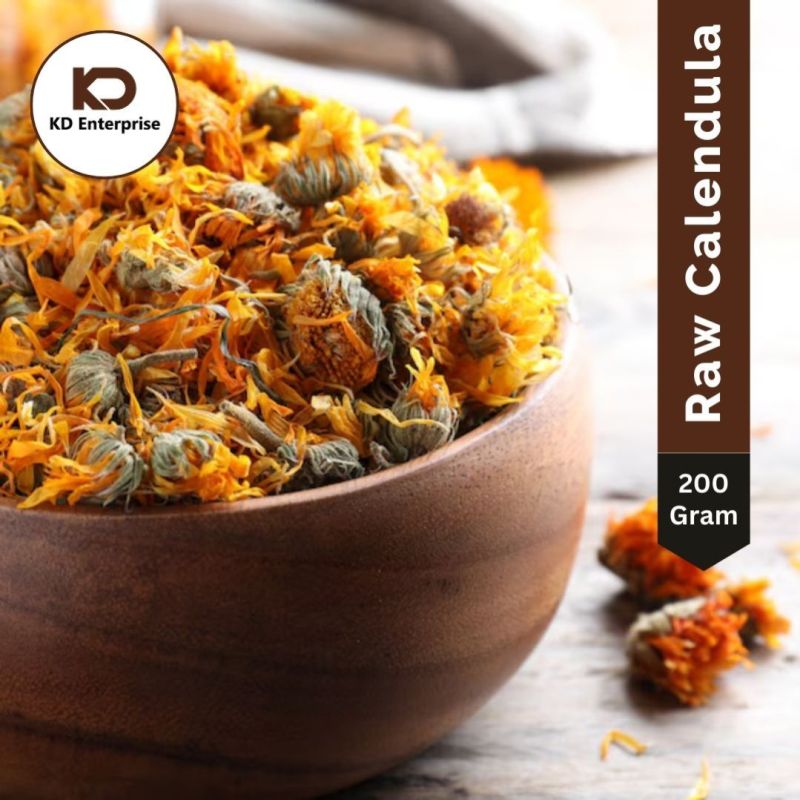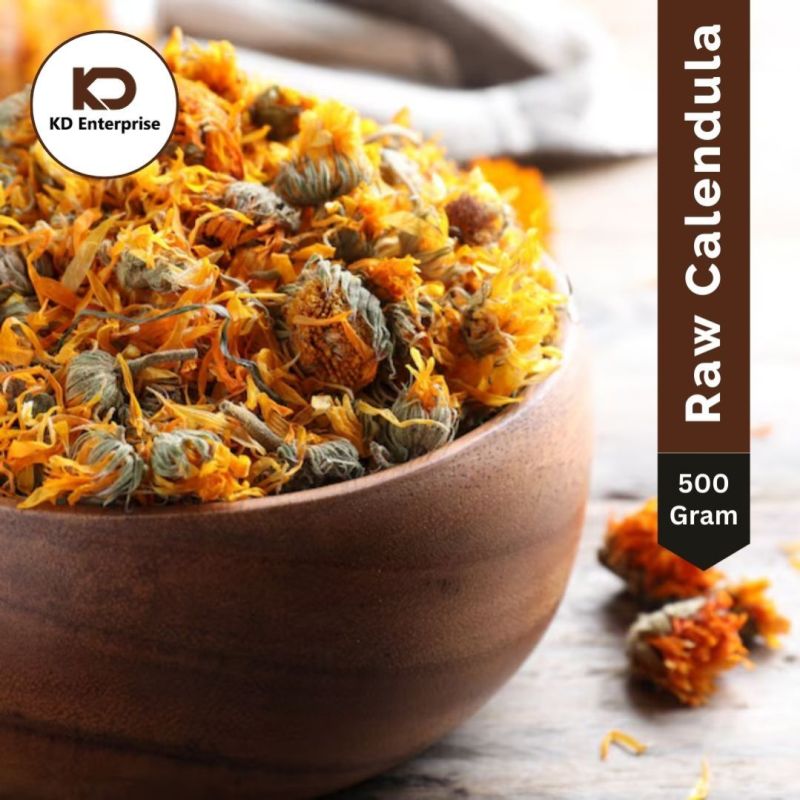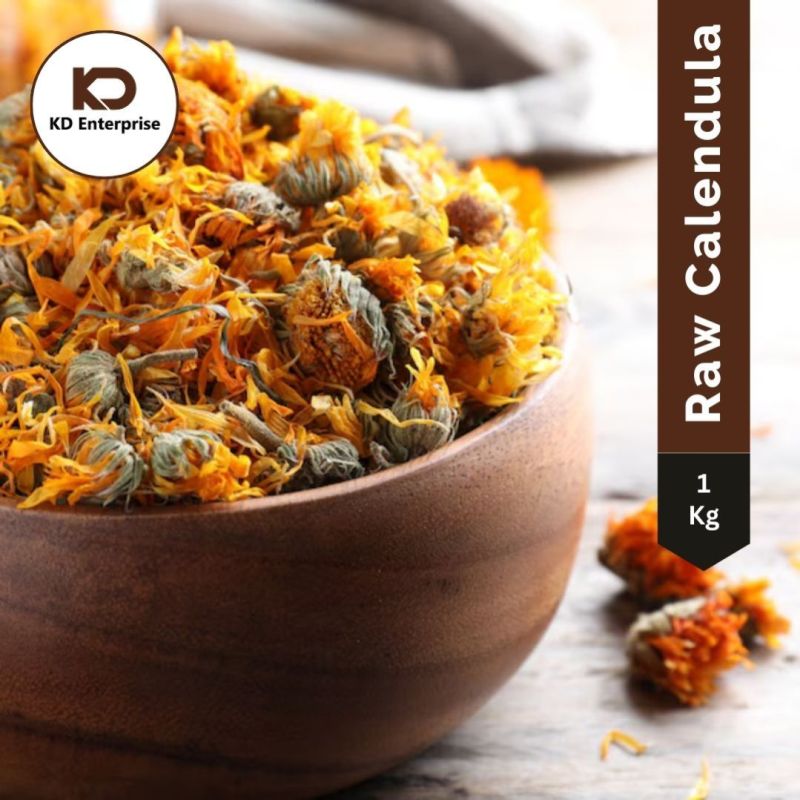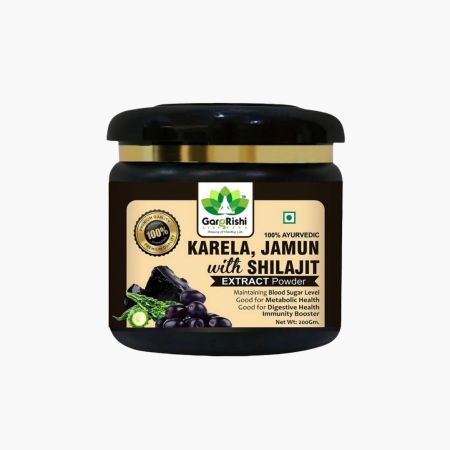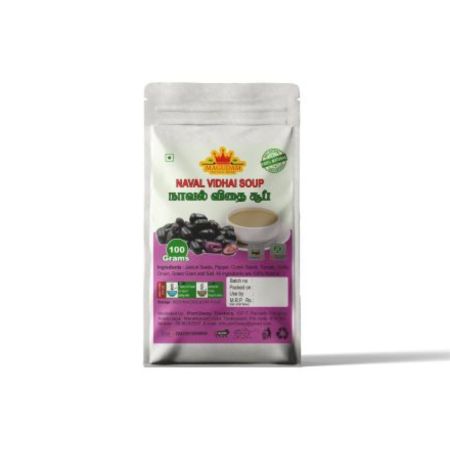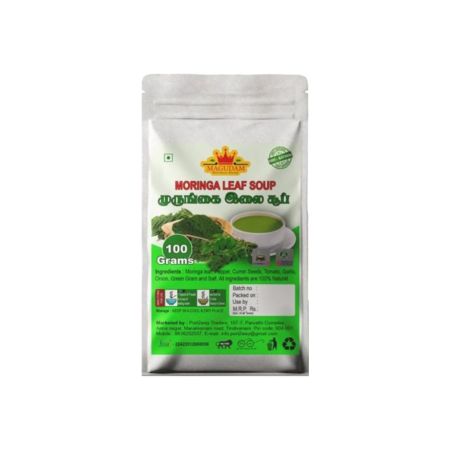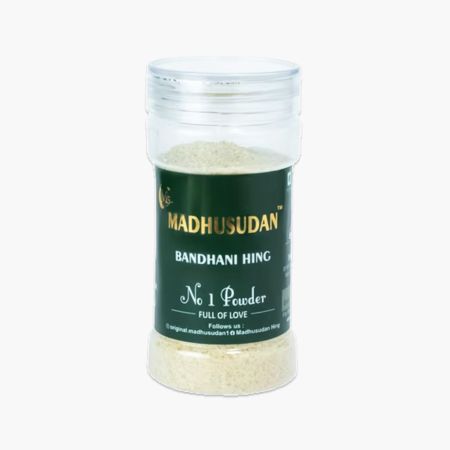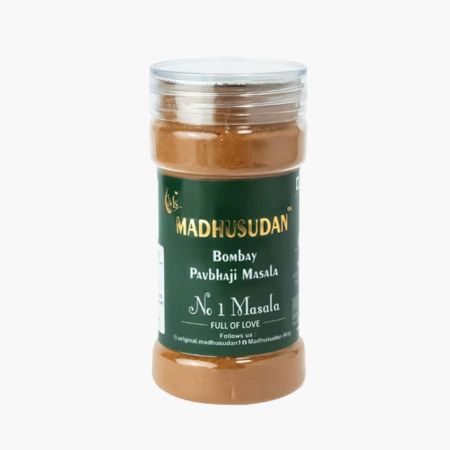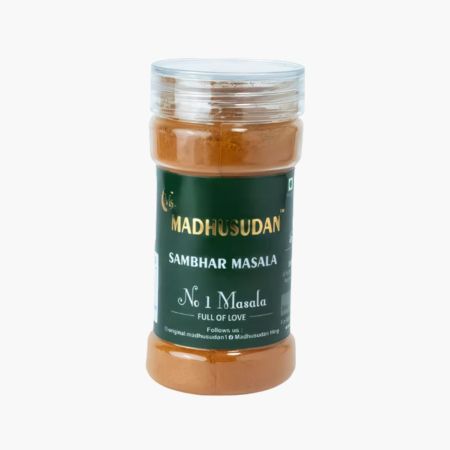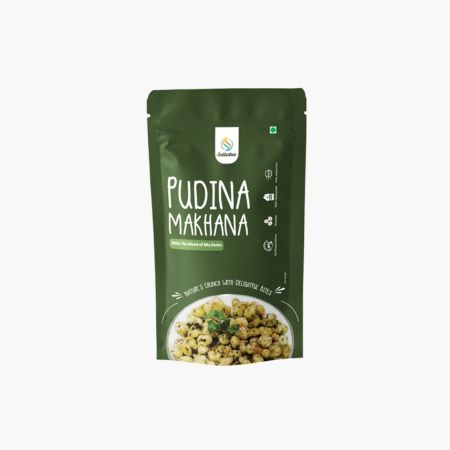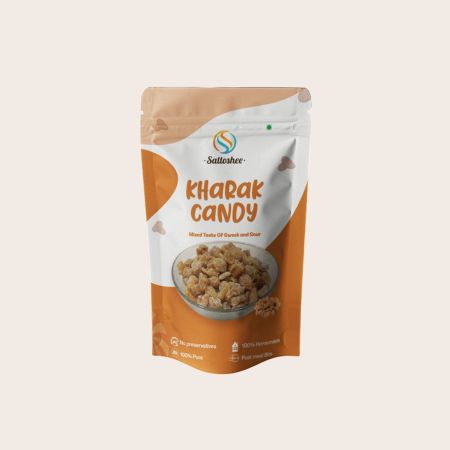|
Calendula (Calendula officinalis):
Calendula, also known as Calendula officinalis or pot marigold, is a bright, golden-orange flowering plant in the Asteraceae family. This herb is widely admired for its vibrant flowers, which have been used for centuries in herbal medicine for their healing and anti-inflammatory properties. Calendula is particularly well-known for its skin-care benefits, though it also offers a range of medicinal uses for overall health, particularly in soothing inflammation and promoting wound healing.
Botanical Characteristics:
Calendula is an annual herb that grows to about 30-60 cm (12-24 inches) tall. The plant produces bright orange or yellow, daisy-like flowers with a characteristic strong, sweet fragrance. The petals of the flowers are often used in herbal medicine, as they are rich in beneficial compounds. Calendula thrives in temperate climates and is commonly grown in gardens, often cultivated for both ornamental and medicinal purposes. The plant has lance-shaped, hairy leaves and stems that are typically green, while the flowers bloom throughout the warmer months, from spring to fall.
Health Benefits of Raw Calendula:
Calendula offers a wide range of health benefits, especially in treating skin conditions, reducing inflammation, and boosting immune function. Its key medicinal benefits include:
Skin Healing and Anti-inflammatory Effects:
Calendula is best known for its use in promoting skin health. It has strong anti-inflammatory and wound-healing properties, making it useful for treating cuts, scrapes, burns, and other skin irritations.
Calendula accelerates tissue regeneration by promoting blood flow to the affected area and reducing inflammation, which helps reduce swelling and speed up healing.
It is commonly used in ointments, creams, and balms to treat dry, cracked skin, eczema, psoriasis, and other dermatological conditions.
Antiseptic and Antibacterial Properties:
Calendula has natural antiseptic and antibacterial properties that help prevent infection in wounds and cuts.
The plant can be used as a topical treatment to cleanse and disinfect minor injuries, promoting faster healing while reducing the risk of infection.
Calendula is also used in mouthwashes to treat oral infections, such as gingivitis and ulcers, thanks to its antibacterial effects.
Anti-fungal and Anti-viral Action:
Calendula has antifungal properties that make it effective in treating fungal infections like athlete’s foot and ringworm.
The plant also has mild antiviral effects, which may help treat viral infections such as cold sores or other skin-based viral conditions.
Reduces Inflammation and Pain Relief:
Calendula is used in herbal medicine to reduce internal and external inflammation.
It has been used to treat gastrointestinal issues, such as gastritis, ulcers, and colitis, by soothing the digestive tract and reducing inflammation.
Calendula's anti-inflammatory properties also extend to musculoskeletal pain, making it useful in topical applications for conditions like arthritis, muscle strains, and joint pain.
Supports Immune System Health:
Calendula is believed to stimulate the immune system, helping the body defend against infections.
Its flavonoids and other compounds support the production of white blood cells, which are crucial for fighting off infections.
Calendula can help improve overall immune function and reduce the risk of illness during cold and flu season.
Soothes Menstrual Discomfort:
Calendula has been used to relieve menstrual cramps and other symptoms associated with menstruation.
It is believed to work as a natural antispasmodic, reducing uterine cramping and alleviating pain.
Calendula also has a mild balancing effect on hormones, which can help regulate irregular menstrual cycles and reduce the discomfort associated with PMS (premenstrual syndrome).
Improves Digestion and Liver Health:
Calendula is used to treat digestive issues such as indigestion, bloating, and heartburn, as it helps soothe the digestive tract and reduce inflammation.
It may also help promote the flow of bile from the liver, assisting in the digestion of fats and promoting overall liver health.
Calendula’s mild sedative properties can calm an upset stomach and help with nausea or vomiting.
Supports Skin Anti-aging and Beauty:
Calendula’s high content of antioxidants, including carotenoids and flavonoids, helps protect the skin from oxidative damage caused by free radicals and environmental stressors.
By neutralizing free radicals, calendula can help reduce the appearance of fine lines and wrinkles, promoting youthful, radiant skin.
Calendula is often included in skincare formulations designed to rejuvenate and brighten the complexion while promoting overall skin health.
Culinary and Medicinal Uses of Raw Calendula:
Calendula Tea: Dried calendula petals can be used to make herbal tea, which has a mildly floral, slightly bitter taste. The tea is typically consumed for its soothing effects on digestion, its anti-inflammatory properties, and its ability to boost immunity.
Calendula Oil and Tinctures: Calendula oil is made by infusing the flowers in a carrier oil, such as olive or coconut oil. This oil is commonly used for topical applications to promote skin healing, reduce inflammation, and treat minor wounds. Calendula tinctures, made by extracting the plant’s active compounds in alcohol, are used as internal tonics to improve immune function, soothe the digestive tract, and support liver health.
Calendula in Skincare Products: Calendula extracts and oils are often added to lotions, creams, balms, soaps, and other skincare products for their healing and anti-inflammatory benefits. These products are commonly used to treat dry skin, eczema, acne, and other dermatological conditions.
Culinary Use: While calendula is not typically consumed in large amounts, its bright yellow petals can be used as a garnish in salads, soups, or desserts. They can also be added to herbal vinegar or infused into oils for a splash of color and mild flavor.
Cultural and Historical Significance:
Calendula has been used since ancient times, dating back to Roman and Greek cultures, where it was regarded as a healing herb. It was traditionally used in religious ceremonies and as a remedy for various ailments, particularly those involving the skin. In medieval times, calendula was used for its ability to treat digestive and liver problems, and it was also commonly used to dye fabric. Calendula was also known as "Mary's Gold" and was associated with the Virgin Mary in Christian traditions.
Nutritional Composition of Raw Calendula:
Vitamins: Calendula flowers are rich in vitamin C, as well as small amounts of vitamin A and B-vitamins.
Minerals: Contains calcium, potassium, iron, magnesium, and zinc.
Bioactive Compounds: Rich in flavonoids, carotenoids, and other antioxidants, which contribute to its medicinal properties.
Calories: Approximately 30-40 calories per 100 grams of raw calendula flowers.
Environmental Role and Cultivation:
Calendula is native to Europe but is now widely cultivated around the world in temperate climates. It prefers well-drained soil and full sun but can also grow in partial shade. Calendula is often grown in home gardens due to its easy cultivation and vibrant appearance. The plant thrives in moderately rich soil and is relatively drought-tolerant once established. It is often grown for both ornamental purposes and as a medicinal herb.
|

.jpg)
